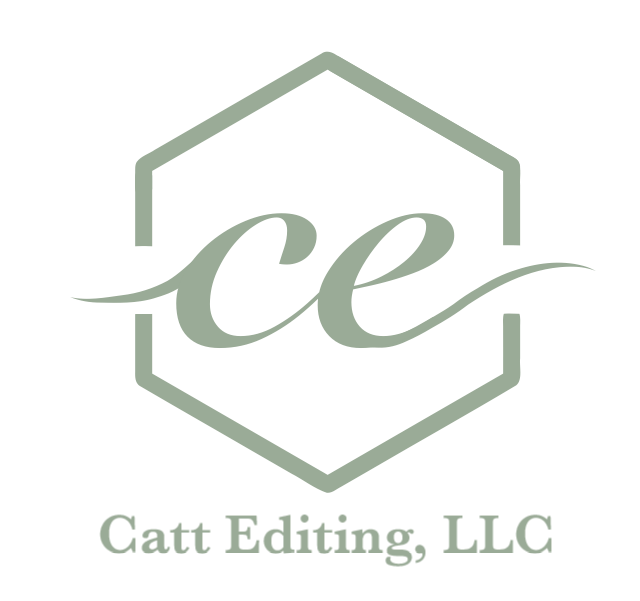Let’s work together to prepare your writing for publishing!
“Catt Editing was amazing to work with. This was my first published work. She made me feel comfortable and confident with the process. I felt very confident that she had my best interest in mind. I will definitely be using Carly again very soon.”
Services
Proofreading
Proofreading is done after an editor has already taken a look at the text and it has been typeset.
This is for last-minute touch-ups before publishing.
Some of my responsibilities for proofreading:
Punctuation
Grammar
Spelling
Simple formatting
Editing book blurb and author bio
Editing
There are three types of editing: developmental, line, and copy editing. These services can be individual, combined, or packaged to accommodate your needs; contact me for a quote.
This step is done before a manuscript is typeset. I recommend a proofreader check the document after an editor to make final corrections.
The following list includes the editor’s responsibilities during each type of editing.
Developmental Editing
Organization, logic, flow of book as a whole
Organization, logic, flow of chapters
Overall structure
Writing techniques
Audience is clear
Concepts and language appropriate for intended audience
Goal is achieved
Tone and word choice match target audience
Suggest global ways to improve the book
Line Editing
Dialogue engaging and followed by powerful tags or action beats
Sentence length, flow, and rhythm
“Show and tell” used well
Writing techniques
Reduce bias and cliches
Clarity and word choice
Point of view, perspective, and tense
Mood, voice, tone
Flag areas that may be missing proper citations to avoid plagiarism
Editing book blurb and author bio
Copy Editing
Punctuation
Grammar
Spelling
Agreement (subject/verb and other)
Active voice used, concrete and concise language
Parallelism
Keep the author’s original voice
Formatting errors
Reduce bias
Flag areas to be recast, offer suggestions when possible
Editing book blurb and author bio
Flag areas that may be missing proper citations to avoid plagiarism
Add front and back matter as needed (copyright page, title page, table of contents, acknowledgments, etc.)
Need help with writing?
All About Editing
Learn about the types of editing, how to find the right editor for you, and how to prepare for editing.
Citations Checking/Creating
Make sure you’re quoting and citing sources correctly. Whether you already have a bibliography and footnotes that just need double-checking or just a bunch of links attached to quotes that need sorting out, we can help you!
If you’re starting at square one with citations, we can help you decide which form of citations would best benefit your audience: footnotes (+ bibliography), endnotes (with or without bibliography, end of chapters or end of book), or parenthetical citations.
To learn more about creating citations, check out this blog post: How to Cite Sources!
Here are the things we can do for you to make sure you give credit where credit is due:
Create proper citations after each quote, either parenthetical or as a note.
Compile a list of sources, organized alphabetically with complete, proper citations according to the agreed-upon style guide.
Check each citation against the original document to ensure accuracy in author's name, title, publisher, journal issue, etc.
If a list of sources has already been created, we will organize and edit each citation according to the agreed-upon style guide.
Can’t decide which service is best for you?
Proofreading vs Book Editing
Proofreading
The goal of proofreading is to ensure correctness and to change only what’s necessary.
A proofreader is the last person to look at your text before publishing.
The text should already be typeset as it will be printed.
You are content with your writing; you only need final touches.
Editing
The goal of editing is to correct the writing flow and grammar so the reader can understand the writing more.
An editor is not the last person to read the text. A proofreader should look at the text after an editor.
The document should only be running text. It should not be formatted for publishing when sent to the editor.
You are still early on in the editing process; the text needs a little more work before publishing.

